
loading
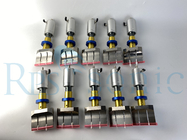

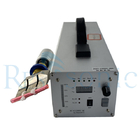

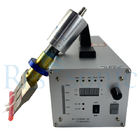

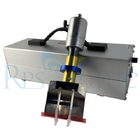

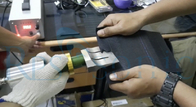

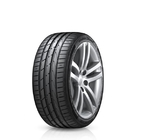

| Place of Origin | China |
|---|---|
| Brand Name | Rps-sonic |
| Certification | CE |
| Model Number | RPS-C40 |
| Minimum Order Quantity | 1pcs |
| Price | negotiable |
| Packaging Details | CARTON |
| Delivery Time | 1DAYS |
| Payment Terms | T/T |
| Supply Ability | 200PCS/MONTH |
| Frequency | 40Khz | Power | 600w |
|---|---|---|---|
| Blade Size | 82.5mm | Blade Material | Titanium |
| Voltage | 220/110V | Weight | 8kg |
| Application | Food,rubber | Generator | Digital |
| High Light | Titanium Blade Ultrasonic Rubber Cutter,Tire Cutting Ultrasonic Rubber Cutter,Tire Ultrasonic Cutting Machine | ||
Titanium Blade 40Khz Ultrasonic Rubber Cutter For Tire Cutting
40Khz Ultrasonic Rubber Cutter For Tire cutting with titanium blade
Parameter
| Machine | Ultrasonic rubber/cake Cutter |
| Frequency(KHz) | 40KHz |
| Power | 500 W |
| Cutting Blade / Horn | Titanium |
| Voltage(V) | 220V |
| The width of blade | 82.5mm |
| Cutting thickness | 10~20mm(depend on materials) |
| Horn amplitude | 10-40μm |
| Equipment weight | 0.6KG |
Description
Traditional rubber cutting technology needs to lubricate the rubber during cutting, and there are phenomena such as slow cutting speed, large cuts, large amounts of dust, uneven cutting surfaces, and sticky knives. Many companies are still using traditional manual methods for cutting, which not only cannot satisfy productivity but also brings hidden dangers to life safety.
For rubber products, cold cutting is more suitable than hot cutting. Cold cutting has the advantages of less heat generation, less thermal deformation, less dust during the cutting process, and no aging and cracking of the section due to excessive temperature. Ultrasonic rubber cutting technology belongs to cold cutting, which uses ultrasonic energy to locally heat and melt the cut rubber to achieve the purpose of cutting materials.
The principle of traditional cutting
Traditional cutting uses a knife with a sharp edge to concentrate a very large pressure on the edge and press the material to be cut. When the pressure exceeds the shear strength of the material being cut, the molecular bonds of the material are pulled apart to achieve cutting. Because the material is pulled apart by strong pressure and rigidity, the cutting edge of the cutting tool must be very sharp, and the material itself has to withstand relatively large pressure. Therefore, it is not effective for soft and elastic cutting, and it is more difficult for viscous materials.
The principle of ultrasonic rubber cutting
Ultrasonic cutting uses the energy of sound waves to cut. It does not require sharp cutting edges, and does not require a lot of pressure, and will not cause chipping or damage to the material being cut. Ultrasonic rubber cutter can easily cut resin, rubber, plastic, fabric and various overlapping composite materials and food.
The principle of ultrasonic rubber cutting knife is to convert 50/60Hz current into 20, 30 or 40kHz electric energy through an ultrasonic generator (also called ultrasonic power supply). The converted high-frequency electric energy is again converted into mechanical vibration of the same frequency through the transducer, and then the mechanical vibration is transmitted to the cutting knife through a set of amplitude modulator devices that can change the amplitude. The ultrasonic rubber cutting knife vibrates along its length with an amplitude of 10-70μm, repeating 40,000 times (40 kHz) per second (the vibration of the blade is microscopic, and it is generally difficult to see with the naked eye). The cutting knife then transfers the received vibration energy to the cutting surface of the workpiece to be cut. In this area, the vibration energy is used to cut the rubber by activating the molecular energy of the rubber and opening the molecular chain.
Features
Very high cutting accuracy-cutting is smooth, clear and clean.
Repeated cutting — The blade output is monitored by a closed loop circuit to provide consistent cutting results.
Lower temperature-the rubber has almost no heat.
Dryness — No lubrication is required. The ultrasonic rubber cutter vibrates 20,000 to 40,000 times per second (depending on the application), so the cutter head can pass through the rubber smoothly.
Low energy consumption-the cutter head only vibrates when cutting, and the power required in a typical thin material application is about 100 watts or less.
Easy to integrate into automation-the ultrasonic rubber cutting process is very simple and can be upgraded to existing mechanical structures or installed in new equipment.
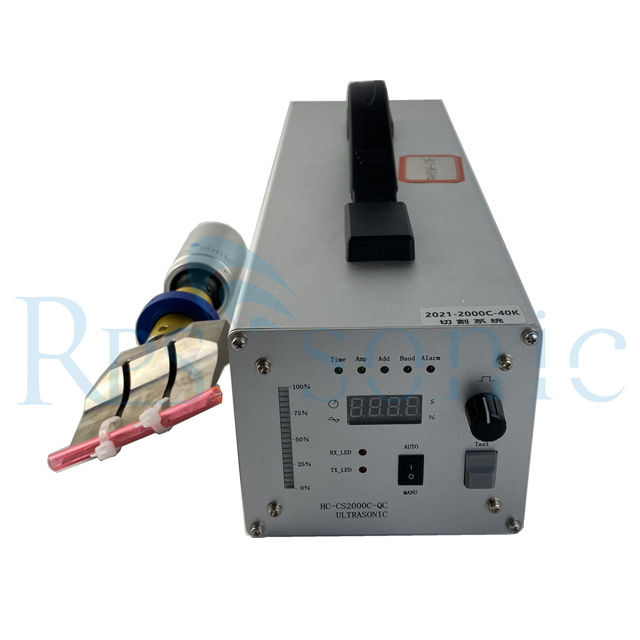
| Frequency | 40Khz | Power | 600w |
|---|---|---|---|
| Blade Size | 82.5mm | Blade Material | Titanium |
| Voltage | 220/110V | Weight | 8kg |
| Application | Food,rubber | Generator | Digital |
| High Light | Titanium Blade Ultrasonic Rubber Cutter,Tire Cutting Ultrasonic Rubber Cutter,Tire Ultrasonic Cutting Machine | ||
Titanium Blade 40Khz Ultrasonic Rubber Cutter For Tire Cutting
40Khz Ultrasonic Rubber Cutter For Tire cutting with titanium blade
Parameter
| Machine | Ultrasonic rubber/cake Cutter |
| Frequency(KHz) | 40KHz |
| Power | 500 W |
| Cutting Blade / Horn | Titanium |
| Voltage(V) | 220V |
| The width of blade | 82.5mm |
| Cutting thickness | 10~20mm(depend on materials) |
| Horn amplitude | 10-40μm |
| Equipment weight | 0.6KG |
Description
Traditional rubber cutting technology needs to lubricate the rubber during cutting, and there are phenomena such as slow cutting speed, large cuts, large amounts of dust, uneven cutting surfaces, and sticky knives. Many companies are still using traditional manual methods for cutting, which not only cannot satisfy productivity but also brings hidden dangers to life safety.
For rubber products, cold cutting is more suitable than hot cutting. Cold cutting has the advantages of less heat generation, less thermal deformation, less dust during the cutting process, and no aging and cracking of the section due to excessive temperature. Ultrasonic rubber cutting technology belongs to cold cutting, which uses ultrasonic energy to locally heat and melt the cut rubber to achieve the purpose of cutting materials.
The principle of traditional cutting
Traditional cutting uses a knife with a sharp edge to concentrate a very large pressure on the edge and press the material to be cut. When the pressure exceeds the shear strength of the material being cut, the molecular bonds of the material are pulled apart to achieve cutting. Because the material is pulled apart by strong pressure and rigidity, the cutting edge of the cutting tool must be very sharp, and the material itself has to withstand relatively large pressure. Therefore, it is not effective for soft and elastic cutting, and it is more difficult for viscous materials.
The principle of ultrasonic rubber cutting
Ultrasonic cutting uses the energy of sound waves to cut. It does not require sharp cutting edges, and does not require a lot of pressure, and will not cause chipping or damage to the material being cut. Ultrasonic rubber cutter can easily cut resin, rubber, plastic, fabric and various overlapping composite materials and food.
The principle of ultrasonic rubber cutting knife is to convert 50/60Hz current into 20, 30 or 40kHz electric energy through an ultrasonic generator (also called ultrasonic power supply). The converted high-frequency electric energy is again converted into mechanical vibration of the same frequency through the transducer, and then the mechanical vibration is transmitted to the cutting knife through a set of amplitude modulator devices that can change the amplitude. The ultrasonic rubber cutting knife vibrates along its length with an amplitude of 10-70μm, repeating 40,000 times (40 kHz) per second (the vibration of the blade is microscopic, and it is generally difficult to see with the naked eye). The cutting knife then transfers the received vibration energy to the cutting surface of the workpiece to be cut. In this area, the vibration energy is used to cut the rubber by activating the molecular energy of the rubber and opening the molecular chain.
Features
Very high cutting accuracy-cutting is smooth, clear and clean.
Repeated cutting — The blade output is monitored by a closed loop circuit to provide consistent cutting results.
Lower temperature-the rubber has almost no heat.
Dryness — No lubrication is required. The ultrasonic rubber cutter vibrates 20,000 to 40,000 times per second (depending on the application), so the cutter head can pass through the rubber smoothly.
Low energy consumption-the cutter head only vibrates when cutting, and the power required in a typical thin material application is about 100 watts or less.
Easy to integrate into automation-the ultrasonic rubber cutting process is very simple and can be upgraded to existing mechanical structures or installed in new equipment.









Ultrasonic Welding Equipment Ultrasonic Welding Transducer Ultrasonic Welding Converter Ultrasonic Liquid Processor Ultrasonic Cutting Equipment Ultrasonic Spray Nozzles Ultrasonic Power Supply Ultrasonic Soldering Equipment Ultrasonic Welding Horn Ultrasonic Assisted Machining Ultrasonic Testing Equipment
content is empty!